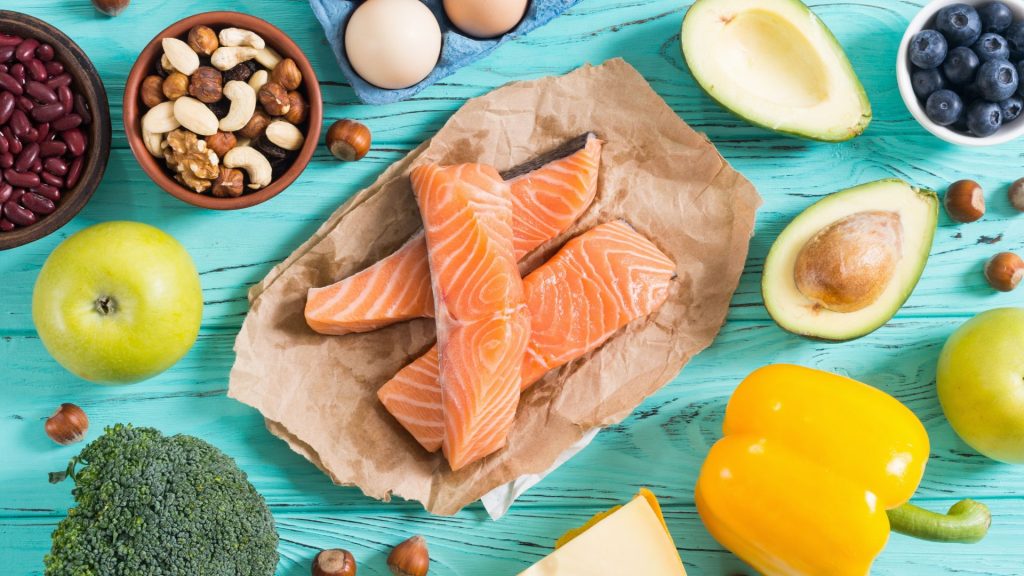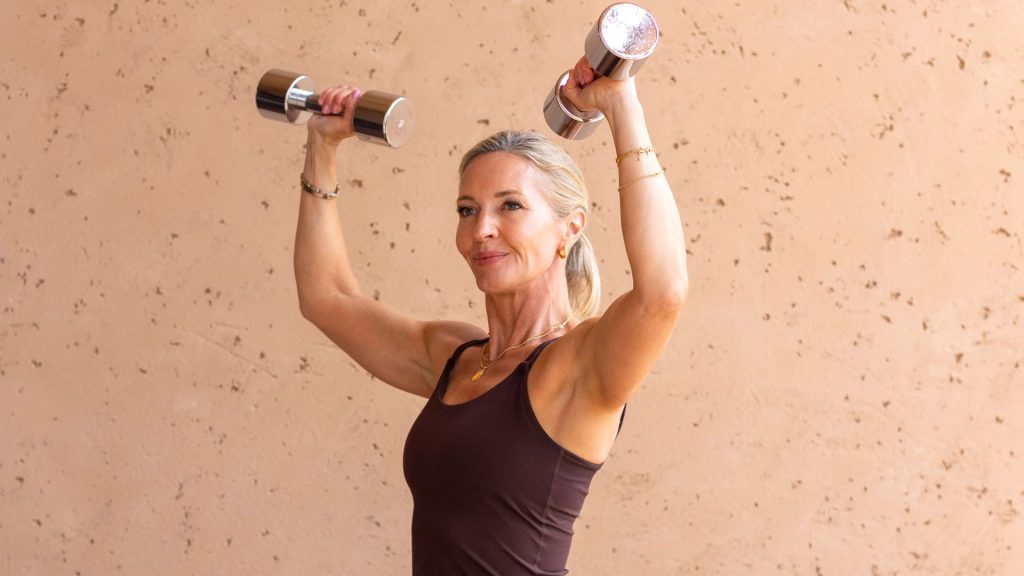
Exercise is great for your skin
I have talked a lot about the physical and mental health benefits of exercising but did you know that workouts are great for your skin? Cardio or aerobic training has been shown to improve skin health but new research has found that lifting weights is even more effective for rejuvenating your skin. Can you believe there is yet another benefit to strength training?!
A study has come out of the sport science department in Kyoto which looked at middle-aged women who took part in either a 16 week aerobic training programme or 16 week resistance training programme to assess the effects on skin. Traditionally, strength or resistance training has been associated with:
- Increased bone density: with the drop in oestrogen post menopause women are more at risk of osteoporosis – training with weights stimulates new bone growth and reduces risk of fractures etc
- Weight management – you build lean muscles using weights which in turn increases your metabolism, burning more calories over the course of the day post workout.
- Increased lean muscle mass, not bulking up contrary to the myth!
- Enhanced mood. Not only will exercise release endorphins which help with anxiety/stress, you will feel more confident too.
- Improved strength/agility/endurance in so many other sports i.e. running tennis etc as well as your overall posture & stability. You’ll have less back pain as a result.
- Reduced risk of heart disease & diabetes
Aerobic training is known to improve cardiovascular fitness, enhance stamina, weight management, improve mood and improve heart health. Given that exercise has such far reaching benefits it makes sense that it might well go as far as the skin.
Before we get into the results of the study let’s take a quick look at the structure of skin. Skin is the largest organ, made up of several components with the vital job of protecting you from germs and infections. The skin is made up of several layers:
- The stratum corneum – the outermost layer of dead skin cells, these used to exist in the epidermis
- The epidermis – this is the thinnest layer of skin but protects you from the external environment. This has 5 layers of its own and is made up of a number of different types of cells including cells that produce keratin (which is the main component of the epidermis), cells which produce melanin (the pigment in skin) and cells which keep foreign substances from getting into your skin.
- The dermis – the middle layer and the layer responsible for wrinkles! It is a complex combination of blood vessels, hair follicles, and oil glands. There is plenty of collagen and elastin (vital for skin health).
- Subcutis – the skin’s fatty layer. Reduction in this layer gives rise to sagging skin, and ultimately wrinkles. This layer has sweat glands and connective tissue.
There are a couple of key components of skin which we should know about:
- Collagen is a protein found in the dermis layer and is termed the fountain of youth! Environmental factors and age diminish the body’s ability to produce collagen and can even cause breakdown of collagen – resulting in wrinkles.
- Elastin is also found in the dermis and is a protein responsible for structure and support for the skin. Much like collagen age and the environment aren’t kind to the production and maintenance of elastin.
- Keratin – is the strongest protein and forms the rigidity of skin.
This study found that at the end of the 16 weeks of training both the aerobic and the resistance training group saw improved skin elasticity and upper dermal structure. The resistance training group however saw increased dermal thickness. So the outcome here was that the group who did 16 weeks of strength training saw greater skin rejuvenation through an enhanced dermal layer (due to more collagen, more elastin). When you lift weights you release a growth hormone produced by the pituitary gland which stimulates your fibroblast cells resulting in collagen production.
This is an exciting study to be released since ageing causes a deterioration of the dermis but it may well be that we can offset some of this through strength training. Although there were improvements in skin to both groups there was a marked difference in the dermal thickness for the resistance training group.
It is so important to look after our skin, protect it from sun damage, have a good skin care routine but now we can help it further by lifting weights!
Let me know what you do to look after your skin? Get in touch.
Caroline x



